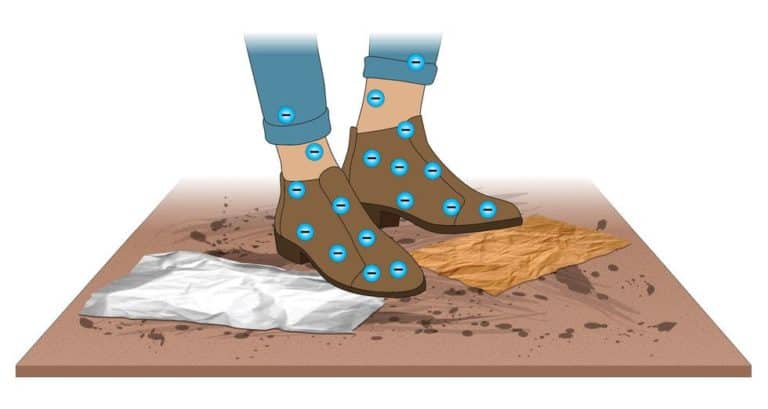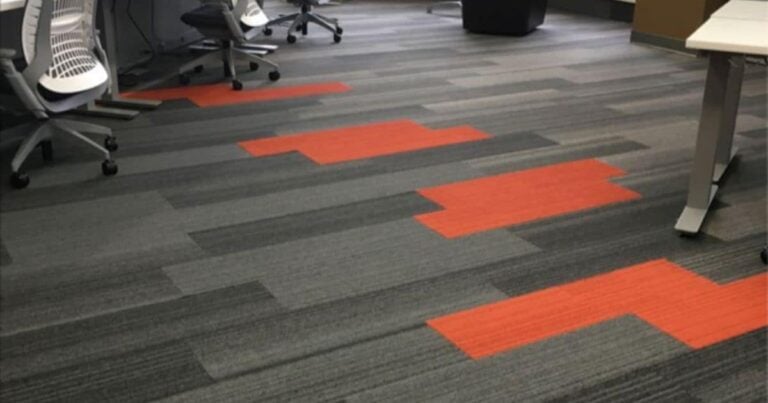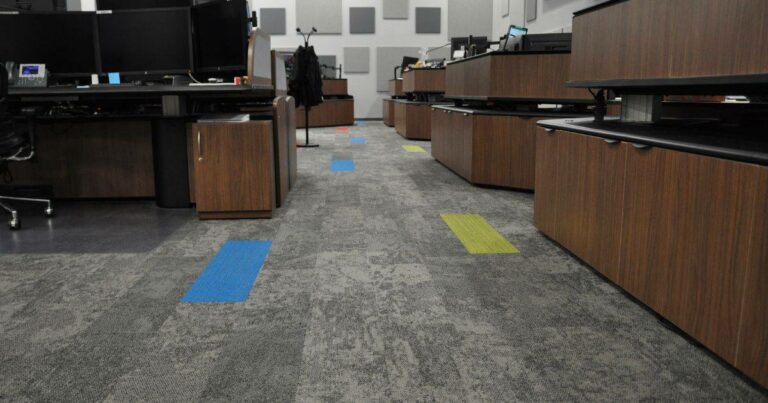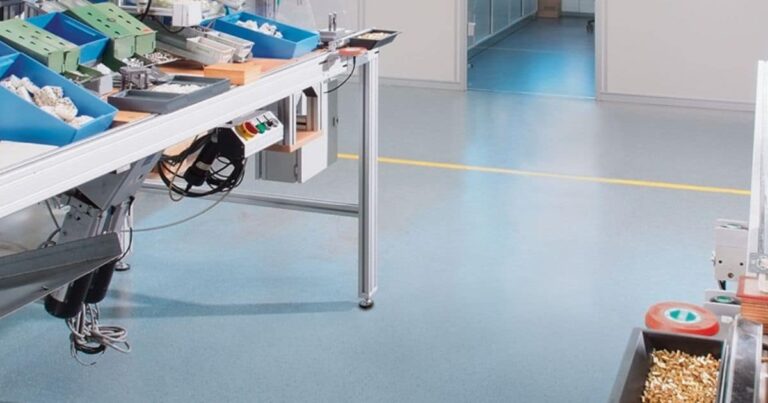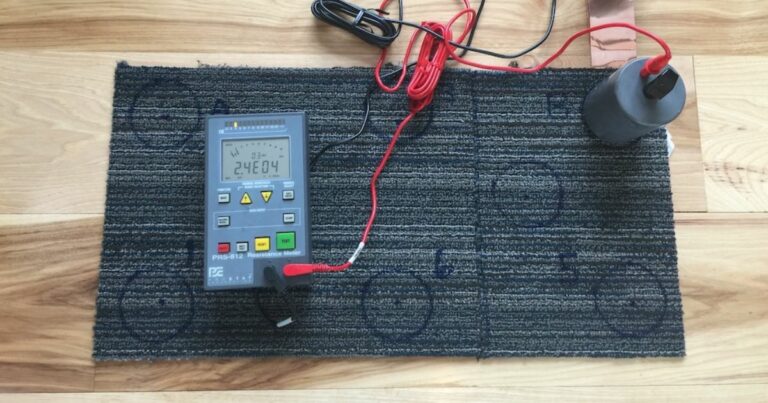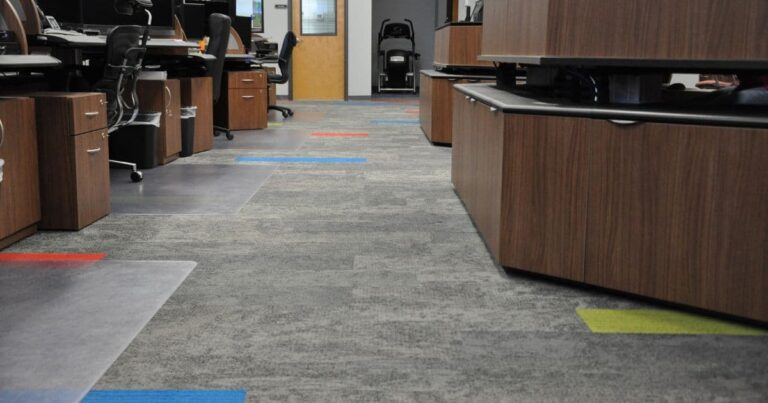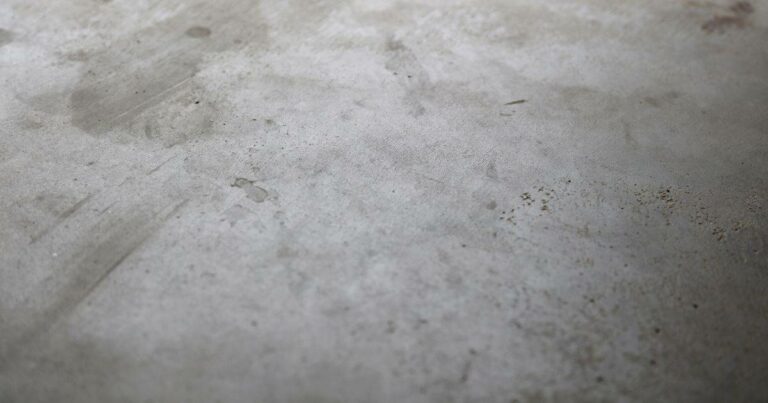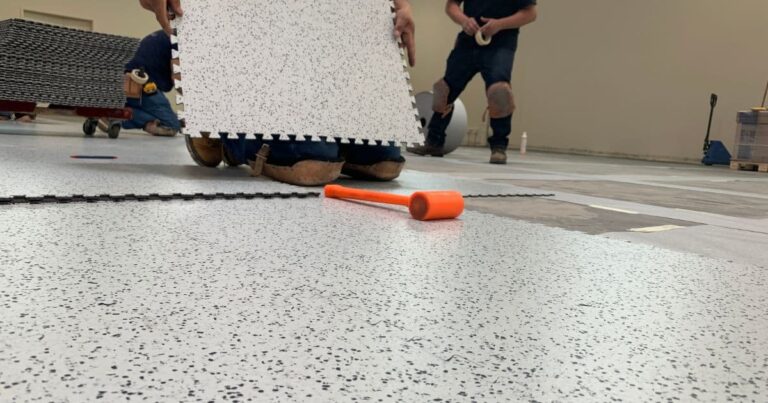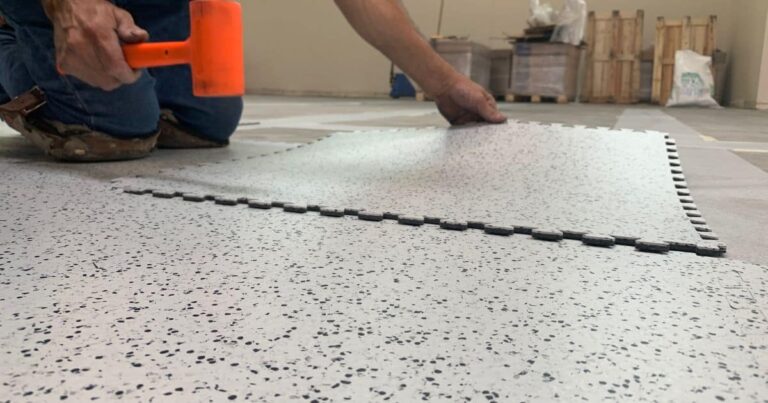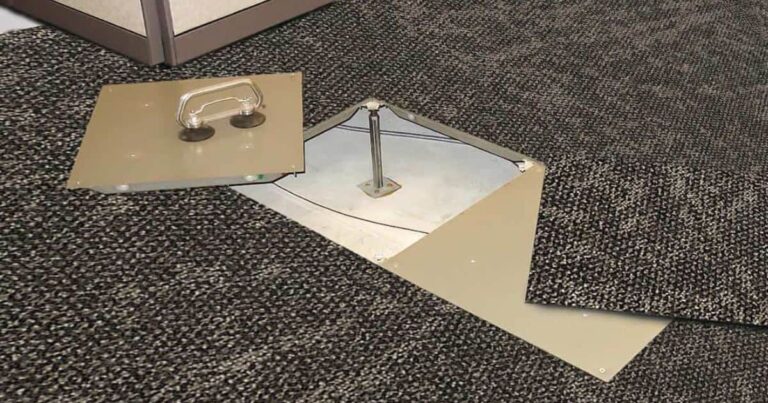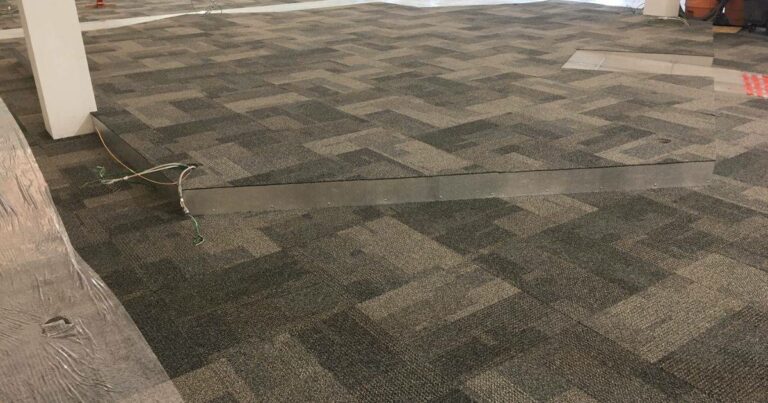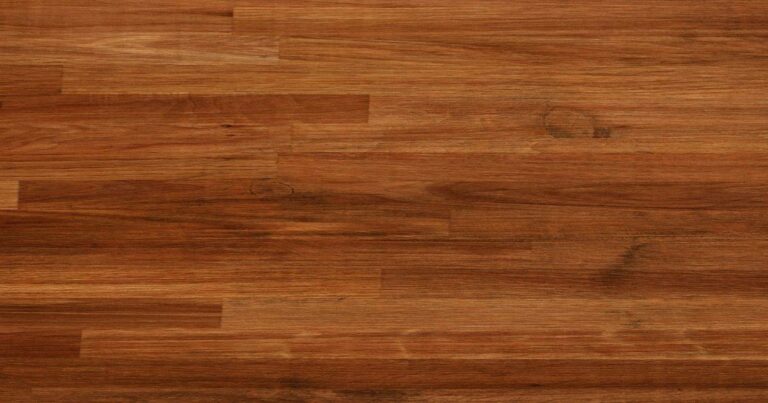FAQ: How do I ground materials and carts to a conductive tile floor?

The photo below shows a conductive vinyl tile installation. This client planned to use wire shelf carts to move electronics assemblies around the floor. Although the floor is grounded and conductive, the cart could not be grounded because its wheels are insulators.
Static cannot discharge through an insulator—even if the insulator is resting on a static-protective floor. The cart in the photo does not have a conductive drag chain or conductive casters. Adding conductive wheels or drag chains to the cart will drain static charges to the floor.
To ground materials or carts to ESD flooring, add conductive drag chains or casters.
The photo below shows a conductive vinyl tile installation. This client planned to use wire shelf carts to move electronics assemblies around the floor. Although the floor is grounded and conductive, the cart could not be grounded because its wheels are insulators.
Static cannot discharge through an insulator—even if the insulator is resting on a static-protective floor. The cart in the photo does not have a conductive drag chain or conductive casters. Adding conductive wheels or drag chains to the cart will drain static charges to the floor.
More on insulators
Insulators can never be grounded, because insulators are inherently non-conductive.
Examples of common non-conducting materials are:
- Rubber sole shoes
- Child-proof electrical outlet covers
- Plastic wrapped around an electrical wire, preventing electrical shocks.
Floating conductors
The metal cart, pictured above, with no ground chain or conductive castors is a “floating conductor,” as its insulative wheels are insulating it from ground. Since the rest of the cart is metal and conductive, it will potentially accumulate static and store it—the same way a capacitor stores voltage.
What is a floating conductor?
Any conductive object electrically separated from ground. In the case of the metal cart, the metal is conductive and the floor is considered ground. By the exact same principle, people walking on an ESD floor wearing regular street shoes are also floating conductors.
Need more advice? Click here to e-mail us with questions on how to maximize the effectiveness of your ESD floor.
More FAQs
Learning Center Articles
- ESD Basics
- Installation & Maintenance
- Selecting & Specifying an ESD Floor
- Technical Information
- 7 Common Mistakes Selecting an ESD floor
- A Guide to ESD Flooring Selection
- Avoid Costly Failures: What You Need to Know When Specifying ESD Flooring
- Choosing ESD Flooring for:
- ESD Footwear: What Is It and When Is It Necessary?
- ESD Footwear for Electronics Manufacturing and Handling Applications
- Facility Managers’ Guide to Selecting ESD Flooring
- The Need for Due Diligence in Specifying Static-Free Flooring
- Standard of Care for Specifying Floors in Mission-Critical Spaces
- Understanding the Hidden Costs of ESD Flooring

StaticWorx high-performance static-control floors protect electronic components, explosives, and high-speed computers from damage caused by static electricity. ESD flooring is part of a system. Choices should always be based on objective, researched evidence. When you partner with us, we look at all possible items that may need to integrate with the floor, and, focusing on your goals and objectives, help you find the right floor for your application.







